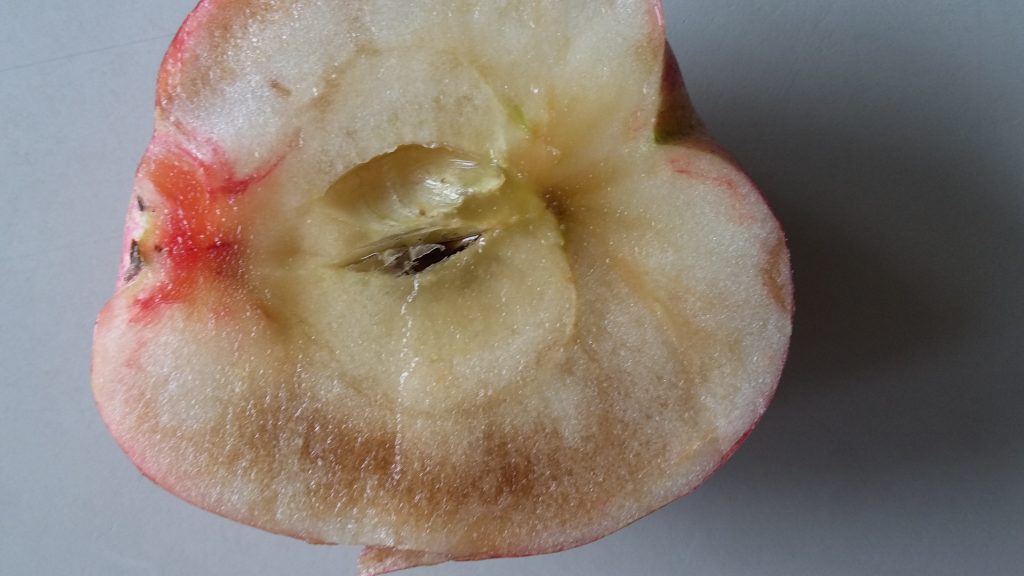Soggy Breakdown Disorder – What Causes Soggy Apple Breakdown

Brown spots inside apples can have many causes, including fungal or bacterial growth, insect feeding, or physical damage. However, if apples kept in cold storage develop a characteristic ring-shaped brown area under the skin, the culprit might be soggy breakdown disorder.
What is Apple Soggy Breakdown?
Apple soggy breakdown is a problem that affects certain apple varieties during storage. Among the varieties most often affected include:
- Honeycrisp
- Jonathan
- Golden Delicious
- Northwest Greening
- Grimes Golden
Symptoms of Soggy Breakdown
The signs of soggy breakdown disorder can be seen when you cut an affected apple in half. Brown, soft tissue will appear inside the fruit, and the flesh may be spongy or mealy. The brown area will appear in the shape of a ring or partial ring under the skin and around the core. The skin and core of the apple are usually unaffected, but sometimes, you can tell by squeezing the apple that it has gone soft inside. The symptoms develop during the harvest period or storage of the apples. They may even appear after several months of storage.
What Causes Soggy Apple Breakdown?
Due to the brown, softened appearance, it would be easy to assume that the brown spots in the apple are caused by a bacterial or fungal disease. However, soggy breakdown in apples is a physiological disorder, meaning that the cause is the environment the fruits are exposed to. Being stored at too-cold temperatures is the most common cause of soggy breakdown disorder. Delaying storage, harvesting fruit when it is overmature, or cold, wet weather conditions at harvest time also increase the risk of this problem. To prevent soggy breakdown, apples should be harvested at the correct maturity and stored promptly. Before cold storage, apples from susceptible varieties should first be conditioned by storage at 50 degrees F. (10 C.) for one week. Then, they should be kept at 37 to 40 degrees F. (3-4 C.) for the rest of the storage time.
Gardening tips, videos, info and more delivered right to your inbox!
Sign up for the Gardening Know How newsletter today and receive a free copy of our e-book "How to Grow Delicious Tomatoes".
Ilana Goldowitz Jimenez is a scientific and agricultural writer with a B.S. in Plant Sciences from Cornell University and a PhD in Chemical Biology and Infectious Disease from Harvard University.
-
 Looking For Plants To Give You The Soft And Fuzzies? Try These 5 Fuzzy Leaf Plant Options
Looking For Plants To Give You The Soft And Fuzzies? Try These 5 Fuzzy Leaf Plant OptionsLovers of texture, drama, silver foliage and tactile plants will adore these special sensory garden additions. These fuzzy leaf plant options will leave you all aglow
By Susan Albert
-
 Get Ready For A Summer Of Hummers! Grow These Full Sun Hummingbird Plants and Flowers
Get Ready For A Summer Of Hummers! Grow These Full Sun Hummingbird Plants and FlowersIf you’re lucky enough to enjoy a sunny backyard, make sure you are maxing out on your pollinator opportunities and grow these full sun hummingbird plants and flowers
By Tonya Barnett